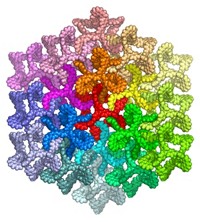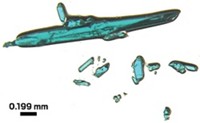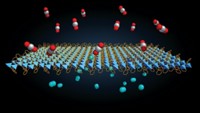Advertisement
Grab your lab coat. Let's get started
Welcome!
Welcome!
Create an account below to get 6 C&EN articles per month, receive newsletters and more - all free.
It seems this is your first time logging in online. Please enter the following information to continue.
As an ACS member you automatically get access to this site. All we need is few more details to create your reading experience.
Not you? Sign in with a different account.
Not you? Sign in with a different account.
ERROR 1
ERROR 1
ERROR 2
ERROR 2
ERROR 2
ERROR 2
ERROR 2
Password and Confirm password must match.
If you have an ACS member number, please enter it here so we can link this account to your membership. (optional)
ERROR 2
ACS values your privacy. By submitting your information, you are gaining access to C&EN and subscribing to our weekly newsletter. We use the information you provide to make your reading experience better, and we will never sell your data to third party members.
Materials
Big Holey Metal-organic Frameworks
September 17, 2007
| A version of this story appeared in
Volume 85, Issue 38
In the menagerie of porous materials, examples of metal-organic frameworks typically have been limited to those in the microporous range-with minute pores of 3 nm in diameter or less. Introducing larger cavities into these compounds tends to destabilize the complex coordination between the metal ions and their ligands. Now, chemists in South Korea have managed to expand metal-organic lattices into the mesoporous range, creating a framework of fused cages with pores measuring 3.9 and 4.7 nm in diameter. A team led by Jaheon Kim of Soongsil University created the material, which is composed mainly of Tb3+ ions and tripodal carboxylate ligands (Angew. Chem. Int. Ed., DOI: 10.1002/anie.200702324). The researchers synthesized the lattices via a solvothermal reaction between triazine-1,3,5-tribenzoic acid and Tb(NO3)3•5H2O in a mixture of N,N-dimethylacetamide, methanol, and water. They determined the cages' structures (one cage shown) by using X-ray crystallography. According to the researchers, the material's high thermal stability and its ability to remain rigid under vacuum make it a good framework for hosting other molecules.





Join the conversation
Contact the reporter
Submit a Letter to the Editor for publication
Engage with us on Twitter